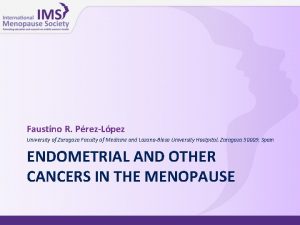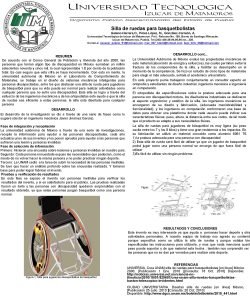Faustino R PrezLpez University of Zaragoza Faculty of






- Slides: 6

Faustino R. Pérez-López University of Zaragoza Faculty of Medicine and Lozano-Blesa University Hostpital, Zaragoza 50009, Spain UROGENITAL SYMPTOMS IN THE POSTMENOPAUSE

Learning Objectives u u Describe the current evidence-based recommendations for women in their second half of life regarding urogenital symptoms Review the trends in urogenital symptoms Describe current approaches for the management of urogenital symptoms Describe the current evidence-based recommendations for women in their second half of life

Outline 1. Genitourinary changes and menopause • The genitourinary syndrome 2. Nocturia 3. Urinary incontinence • Stress urinary incontinence • Overactive bladder 4. Vulvovaginal atrophy 5. Vulvoperineal lichen sclerosous 6. Vestibulodynia and vulvodynia

The Micturition Cycle

Diminished ovarian hormones and urogenital effects u The urethra and trigone are estrogen-dependent tissues Estrogen deficiency can contribute to urinary incontinence and urinary dysfunction. u Reduction in urinary p. H which contributes to bacterial flora change that may result in pruritus and maladorous discharge u Vaginal changes that may produce insertional dyspareunia u Atrophic cystitis that can mimic urinary tract infections u

Genitourinary system changes and menopause Atrophy of vaginal epithelium u Atrophic urethritis and cistitis u Drop in urethral closure pressure at rest and in stress u Descent of the uterus due to decreased collagen in the uterosacral and cardinal ligaments u Pubic hair becomes sparse u Increase in the prevalence of abdominal obesity u











